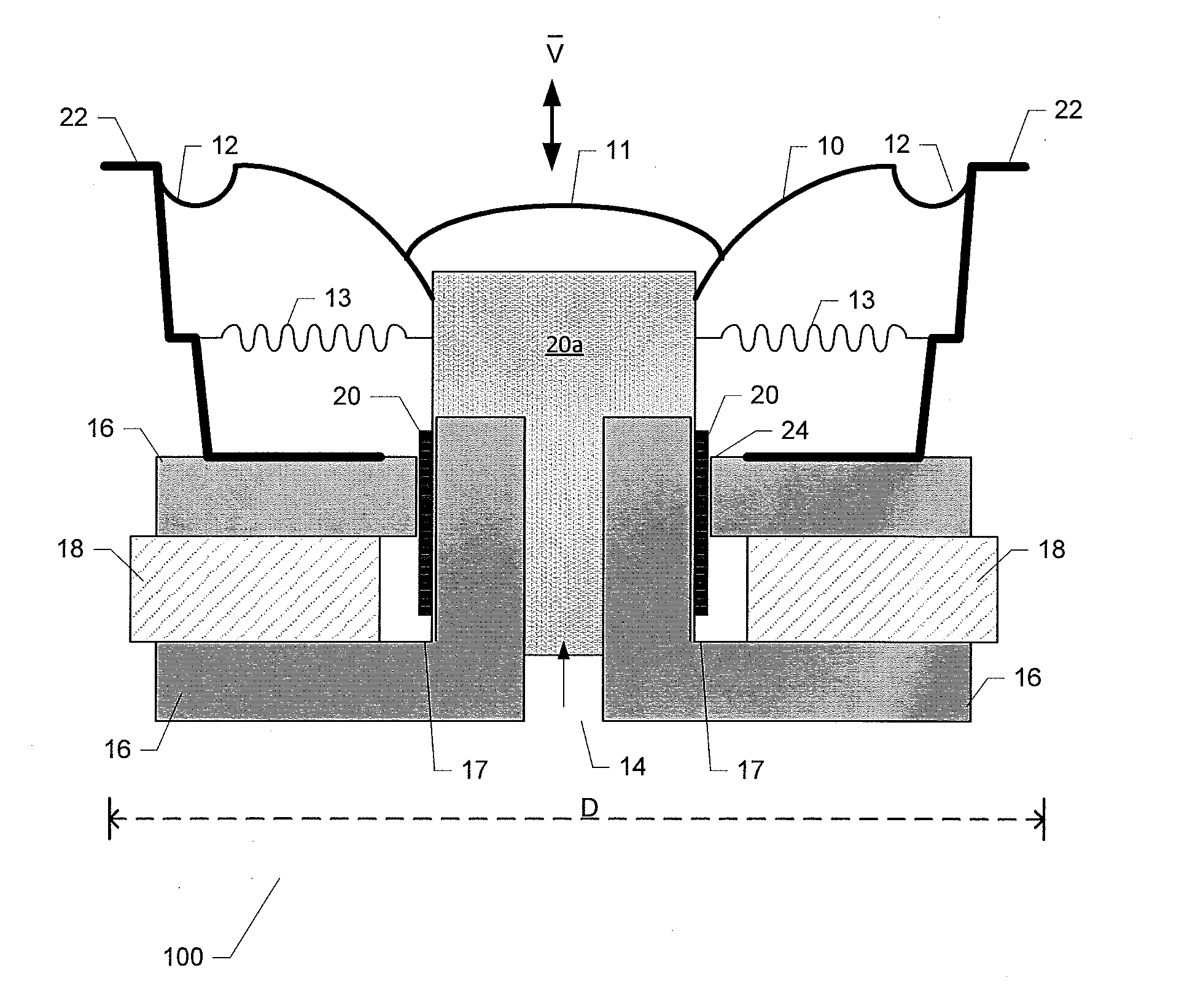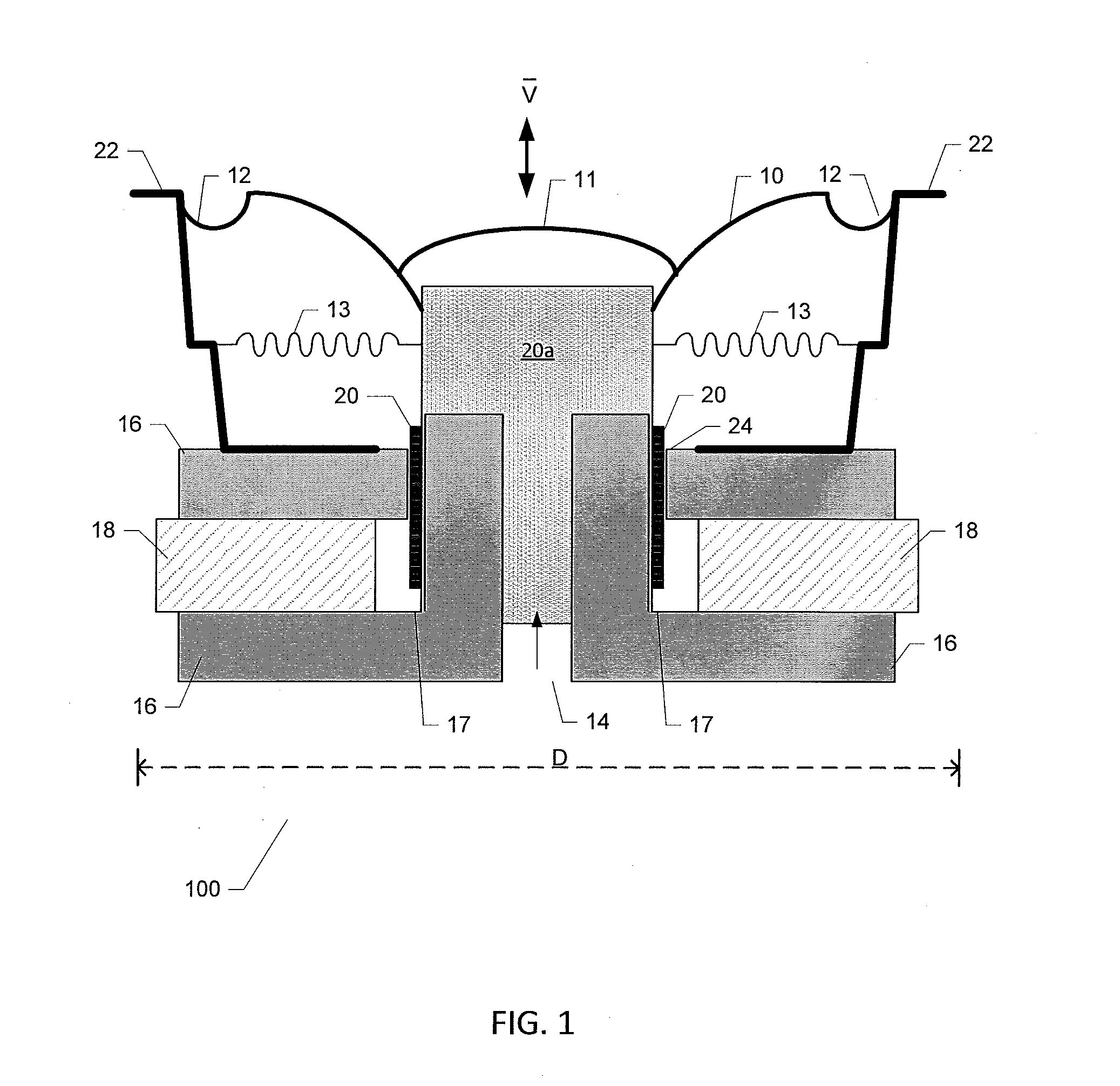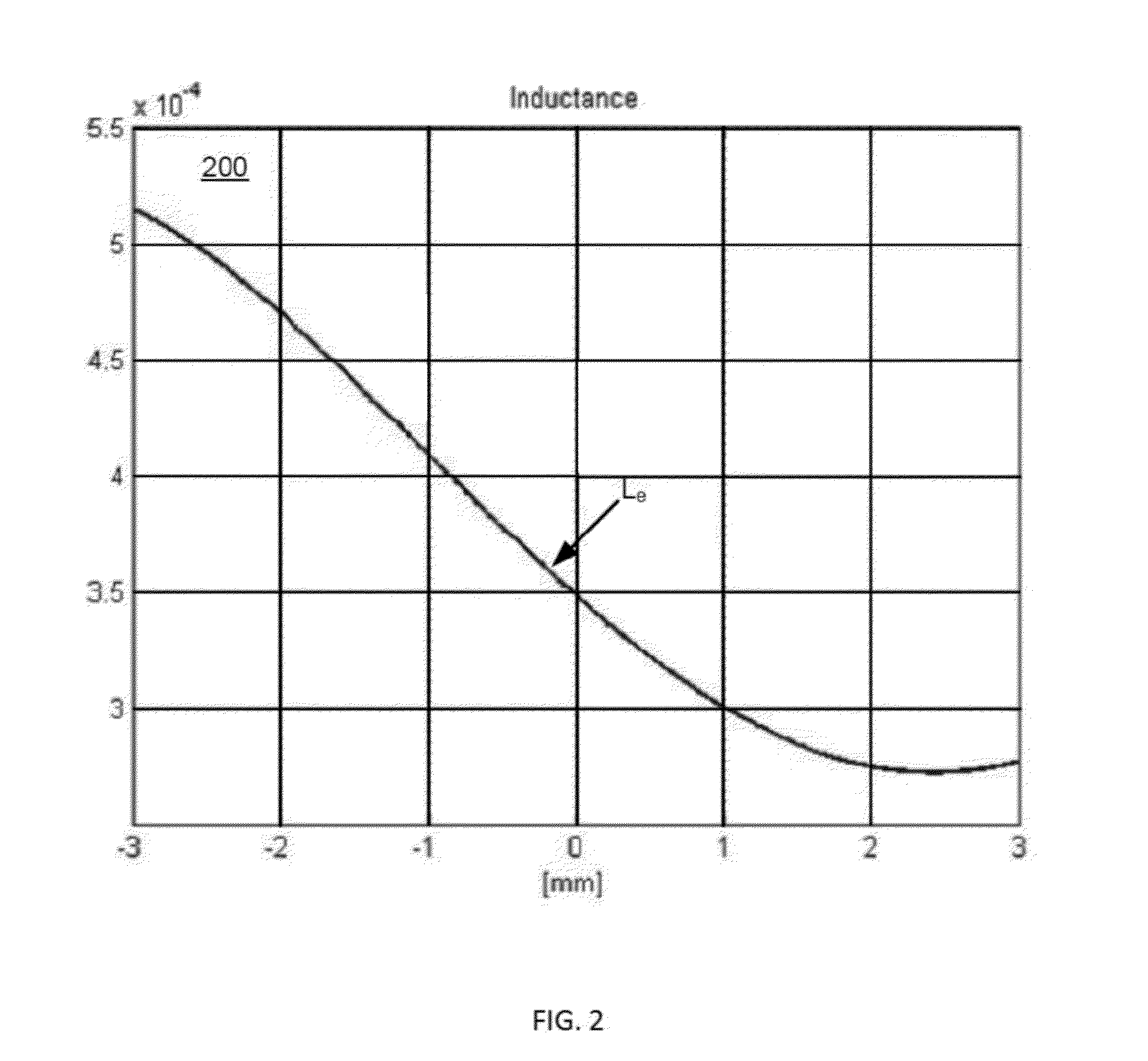Method and detector of loudspeaker diaphragm excursion
a detector and diaphragm technology, applied in the direction of transducer protection circuits, electrical equipment, etc., can solve the problems of high power consumption of digital signal processors executing model based estimate and/or control algorithms, complex model based approaches, and mechanical damage of various kinds, so as to achieve reliable and convenient protection
- Summary
- Abstract
- Description
- Claims
- Application Information
AI Technical Summary
Benefits of technology
Problems solved by technology
Method used
Image
Examples
Embodiment Construction
[0049]FIG. 1 is a schematic illustration of a typical electrodynamic loudspeaker 100 for use in various types of audio applications. The skilled person will appreciate that electrodynamic loudspeakers exist in numerous shapes and sizes dependent on the intended type of application. The electrodynamic loudspeaker 100 used in the below described methodologies and devices for loudspeaker excursion detection and control has a diaphragm diameter, D, of approximately 6.5 inches, but the skilled person will appreciate that the present invention is applicable to virtually all types of electrodynamic loudspeakers, in particular to miniature electrodynamic loudspeaker for sound reproduction in portable terminals such as mobile phones, smartphones and other portable music playing equipment. The maximum outer dimension D such miniature electrodynamic loudspeakers may lie between 6 mm and 30 mm.
[0050]The electrodynamic loudspeaker 100 comprises a diaphragm 10 fastened to a voice coil former 20a....
PUM
 Login to View More
Login to View More Abstract
Description
Claims
Application Information
 Login to View More
Login to View More - R&D
- Intellectual Property
- Life Sciences
- Materials
- Tech Scout
- Unparalleled Data Quality
- Higher Quality Content
- 60% Fewer Hallucinations
Browse by: Latest US Patents, China's latest patents, Technical Efficacy Thesaurus, Application Domain, Technology Topic, Popular Technical Reports.
© 2025 PatSnap. All rights reserved.Legal|Privacy policy|Modern Slavery Act Transparency Statement|Sitemap|About US| Contact US: help@patsnap.com



